Rich, dark, and not overly sweet, mulberry syrup, also known as pekmez, petimezi Greek molasses and Turkey syrup, is a special way to preserve mulberries and other juicy fruits. It's the perfect thing to make if you shook mulberries from a tree and they happened to get dirty in the process. Read on and I'll explain how it's made, and what to do with it.
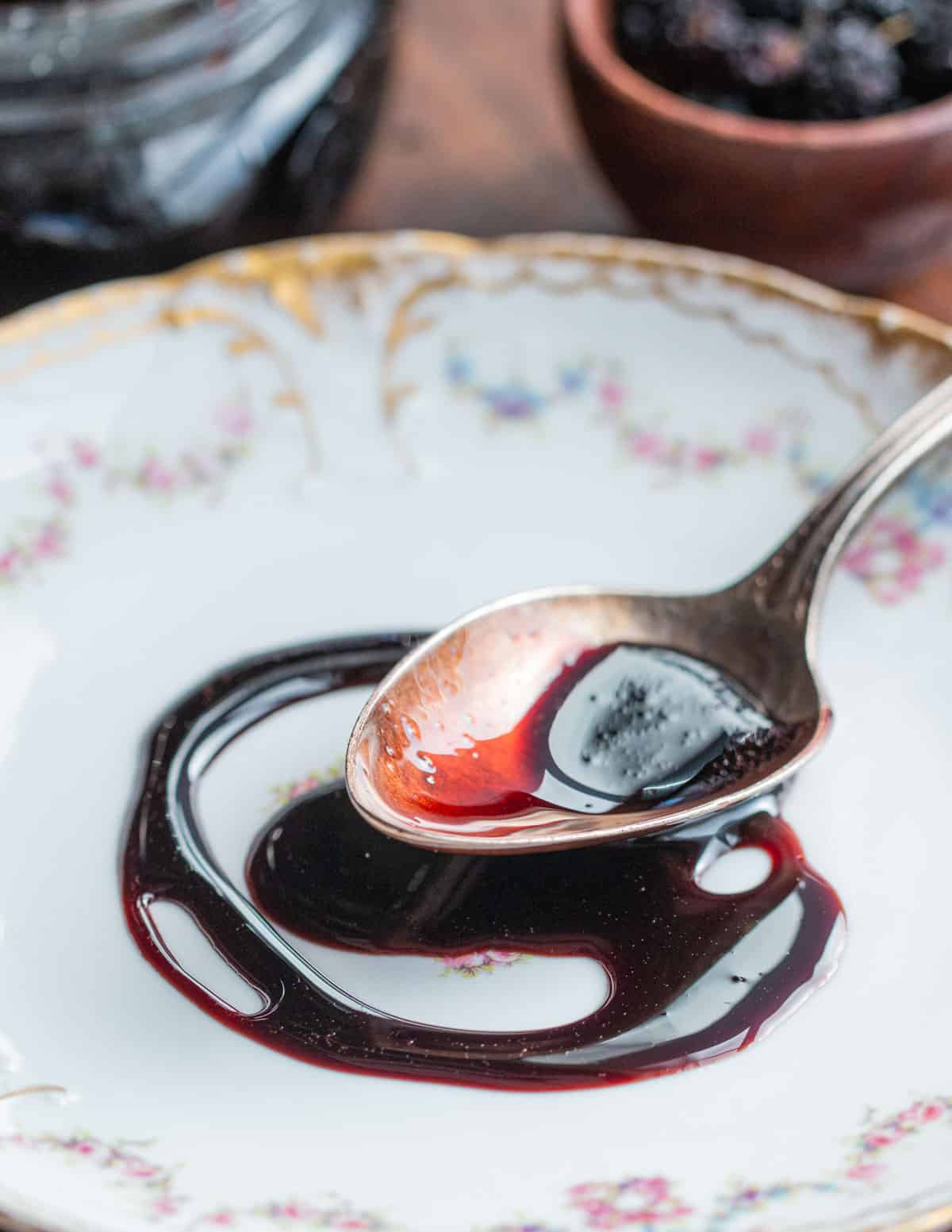
What is Pekmez?
An ancient preserve of fruit juice dating back to the Byzantine Empire and the Ancient Greeks, pekmez is a sort of ultra-pasteurized syrup or jam made from simmering fruit juice or grape must until concentrated and thick. It's often spread on toast or diluted with water to make a drink, similar to apple molasses / cider syrup.
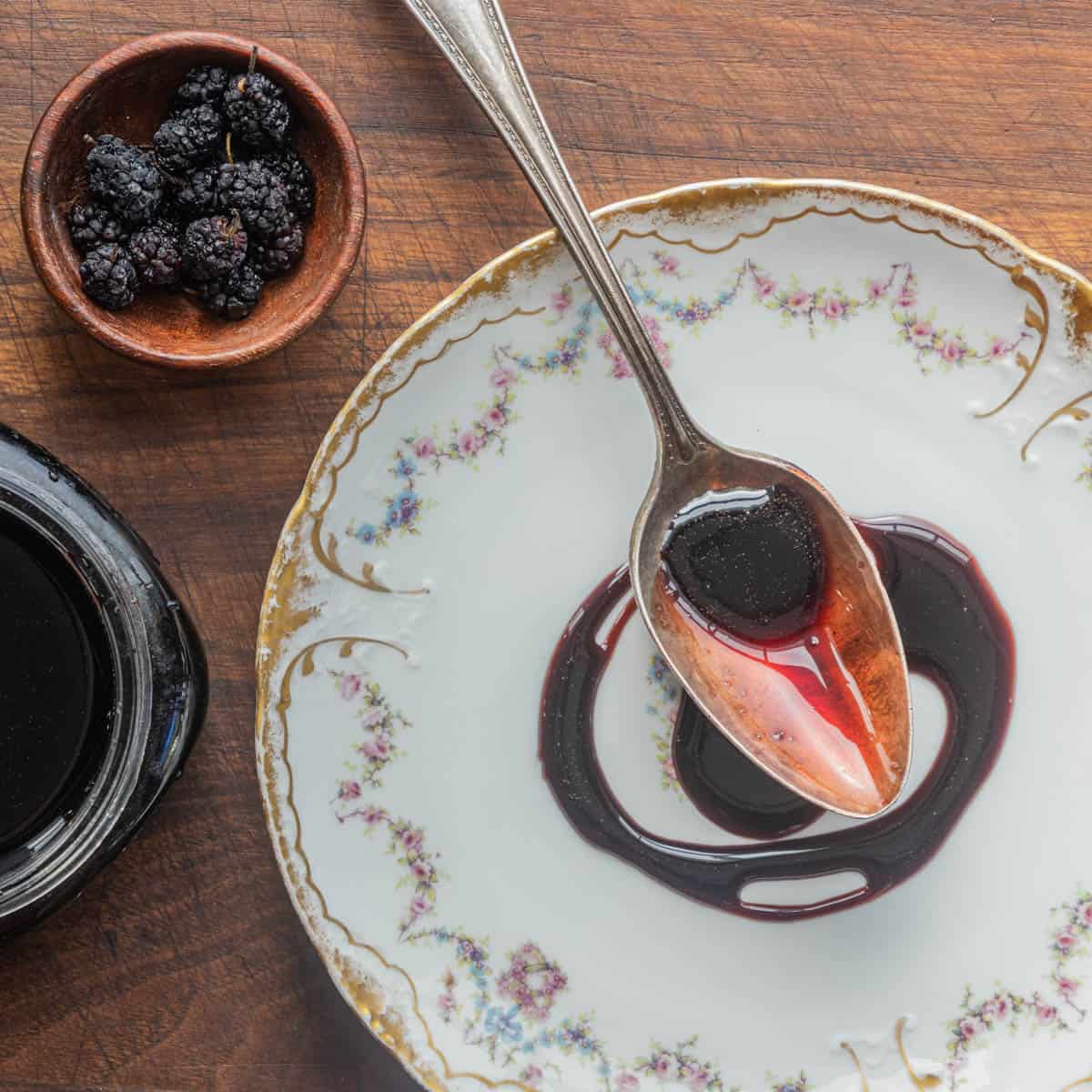
Although it can be made from different fruits like grapes and figs, homemade white or black mulberry syrup is one of my favorites Other juicy fruits can be used to make the syrup, and I've made wild blueberry pekmez and grape molasses. While you can buy grape pekmez online, it's often filled with sugar and it's more fun to make your own.
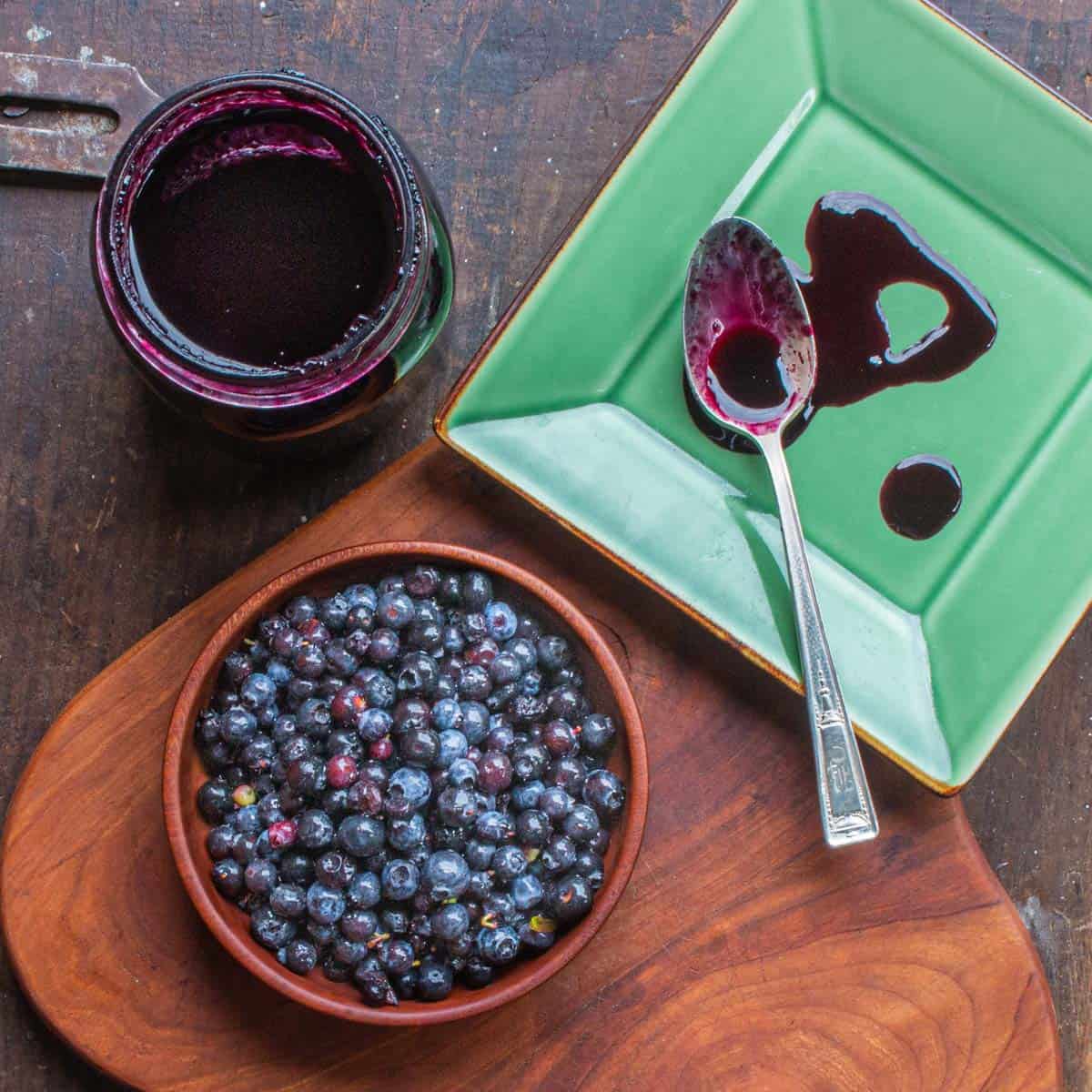
Mulberry Pekmez
It's easy to see why mulberries are traditionally used in places like Azerbaijan and other areas. Unlike grapes, which can be harvested by hand, the most efficient way to harvest mulberries is by shaking the tree. The berries fall on a tarp and are collected en-masse. I've shaken 15 lbs out of one tree.

Since the berries fall, its easier for them to be bruised, which shortens their shelf life. It's also more likely they can be gritty or dirty. Cooking them into syrup fixes both of those problems, turning gritty berries into silky, sweet syrup great.
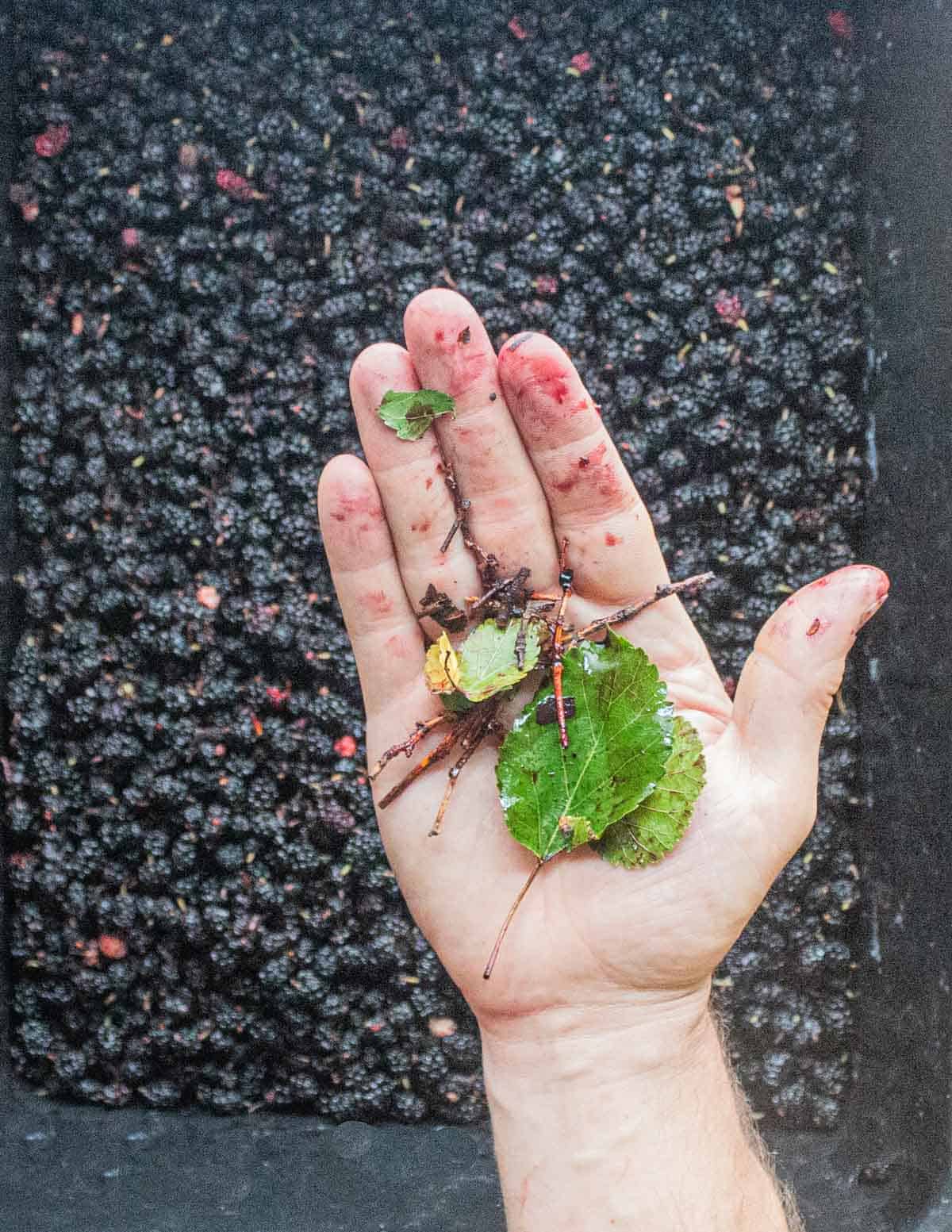
How to Make Mulberry Syrup / Molasses
First you'll need to harvest mulberries, at least 5 lbs. This isn't a problem if you have a mulberry tree you can shake.
Interestingly, unlike other recipes like chokecherry syrup, mulberry syrup doesn't contain any additional water. The berries are put into a large pot and brought to a simmer.
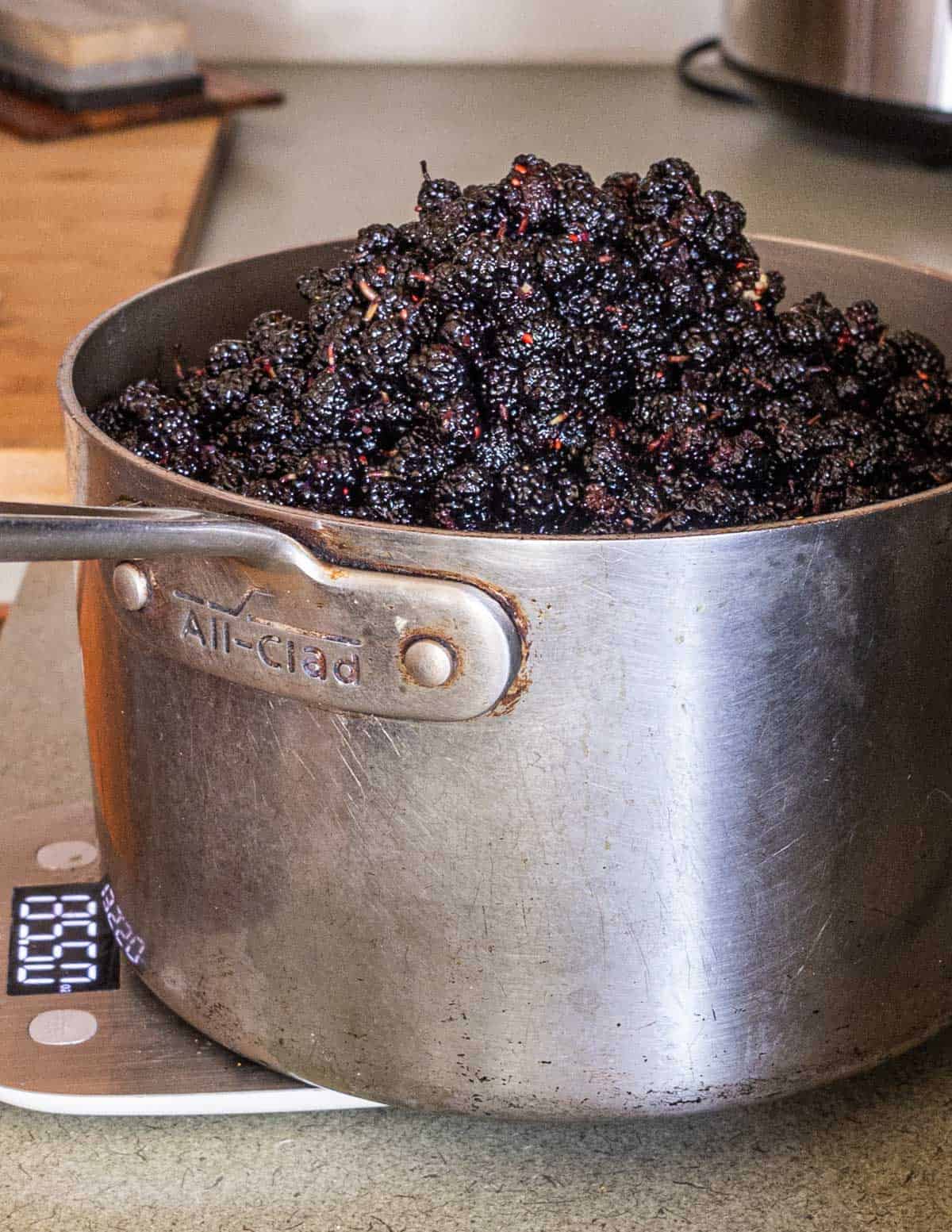
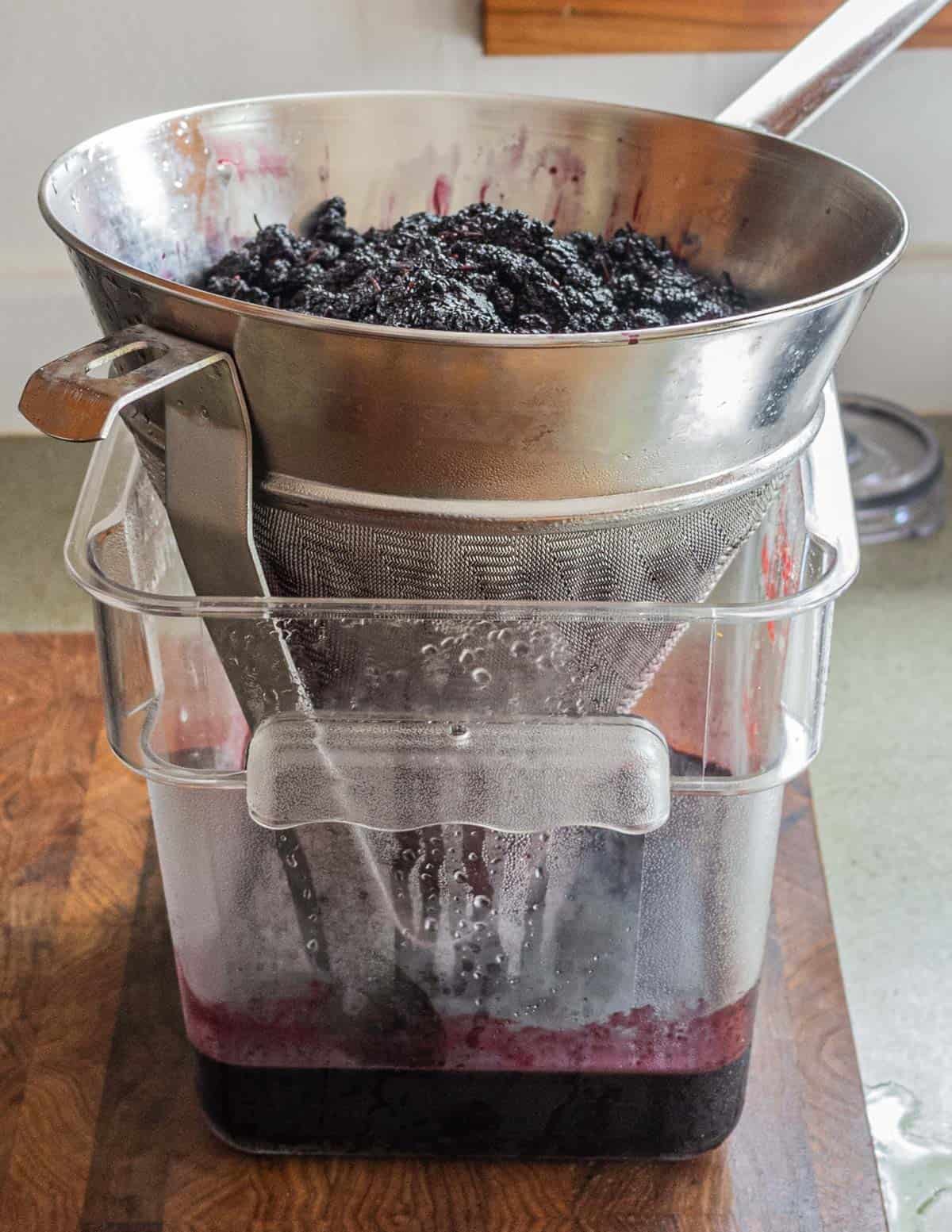
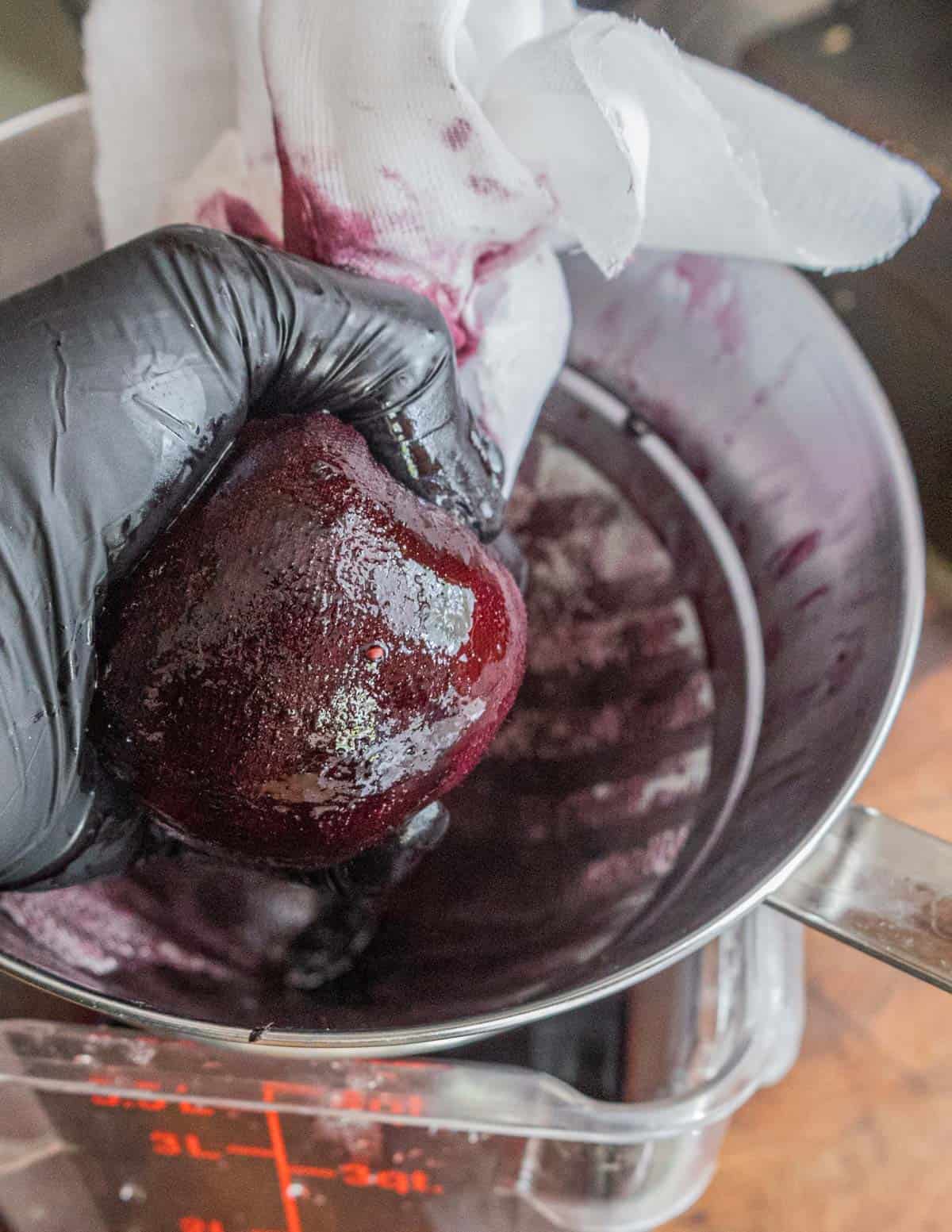
Once the berries are hot and have released their juice they're strained. If your fruit wasn't dirty it can be used to make mulberry jam. Next the juice is cooked slowly and reduced until it makes a thick syrup. Typically this means reducing it by 70% of its volume.
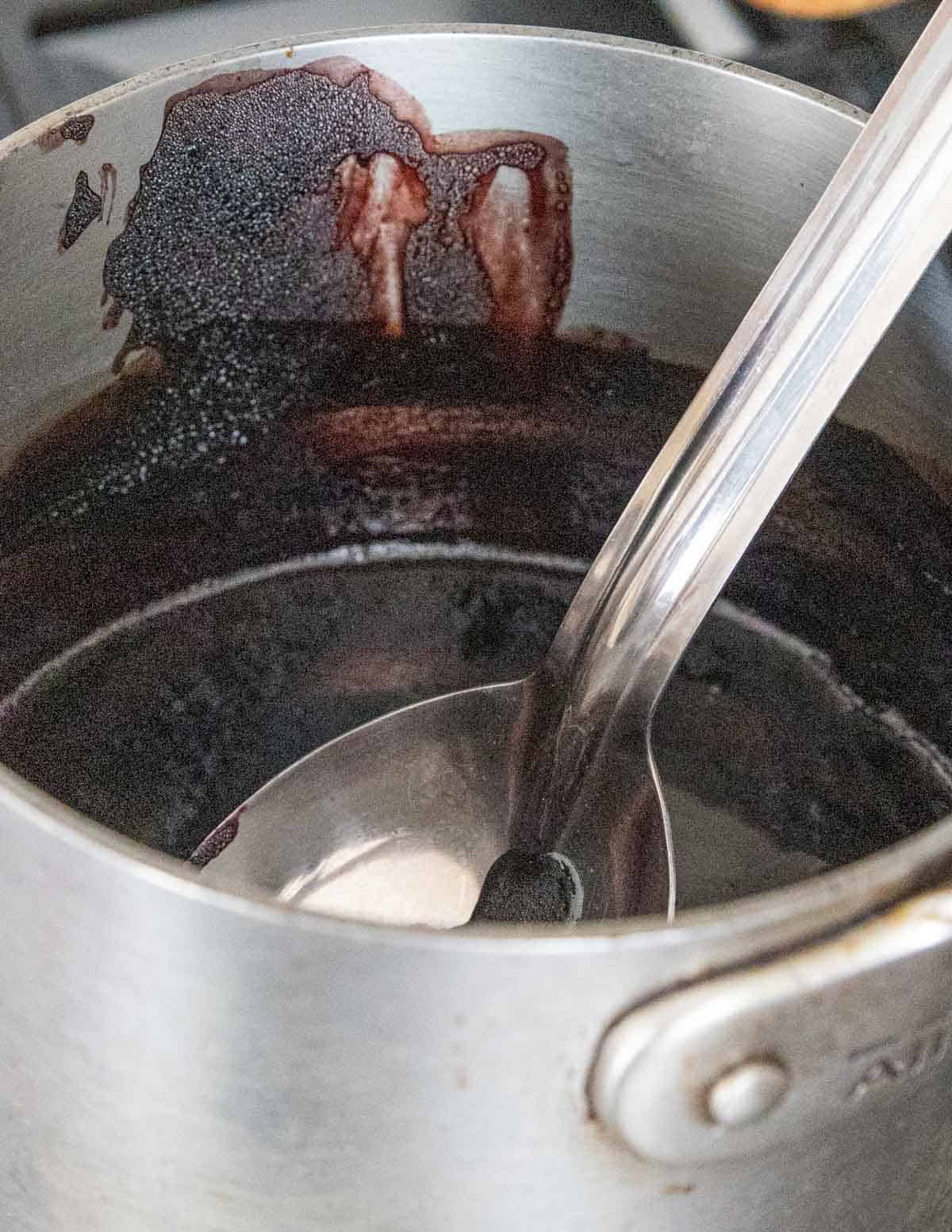
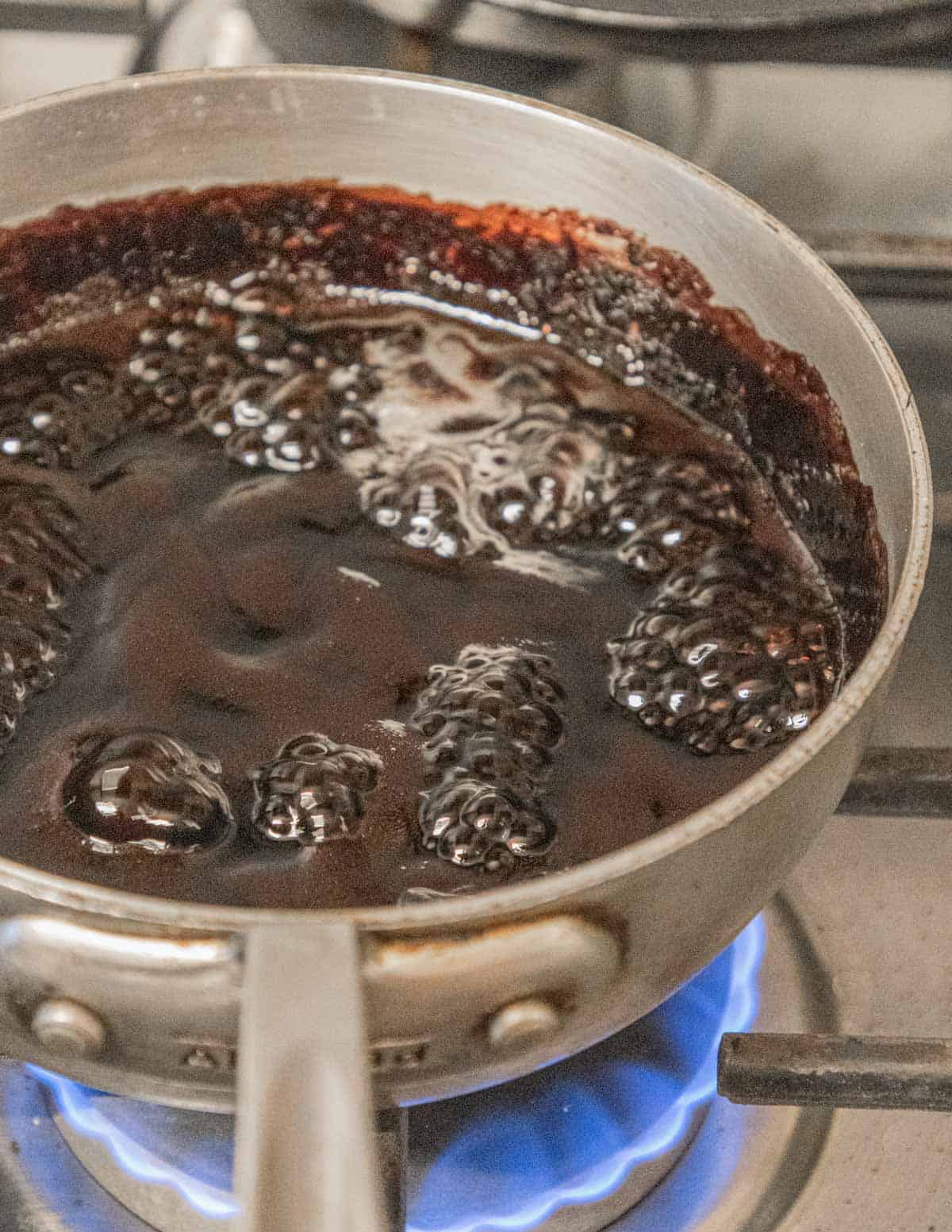
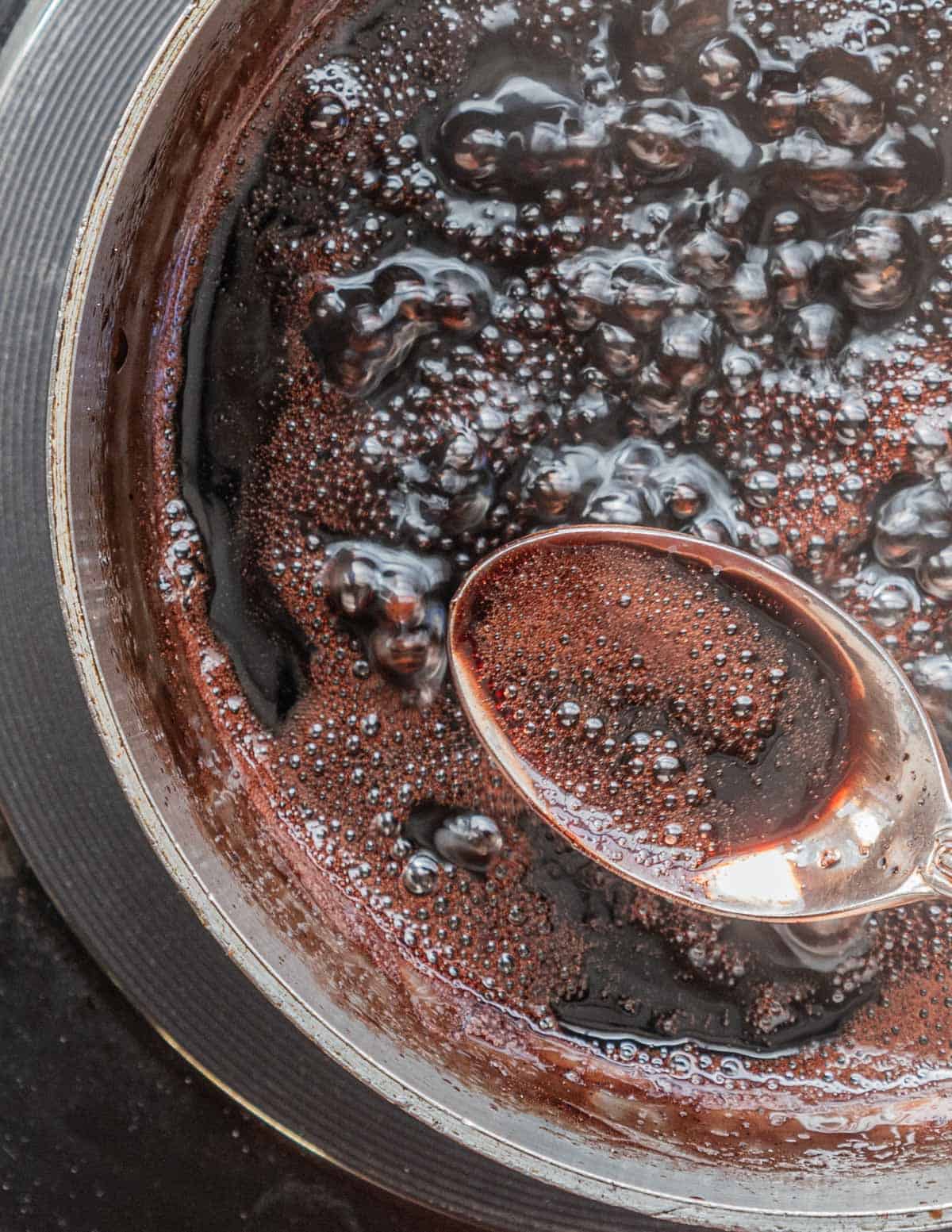
I add a modest amount of sugar to mine to help prevent it from solidifying from pectin but traditional recipes may use only fruit juice. Commercial petimezi typically contains plenty of added sugar.
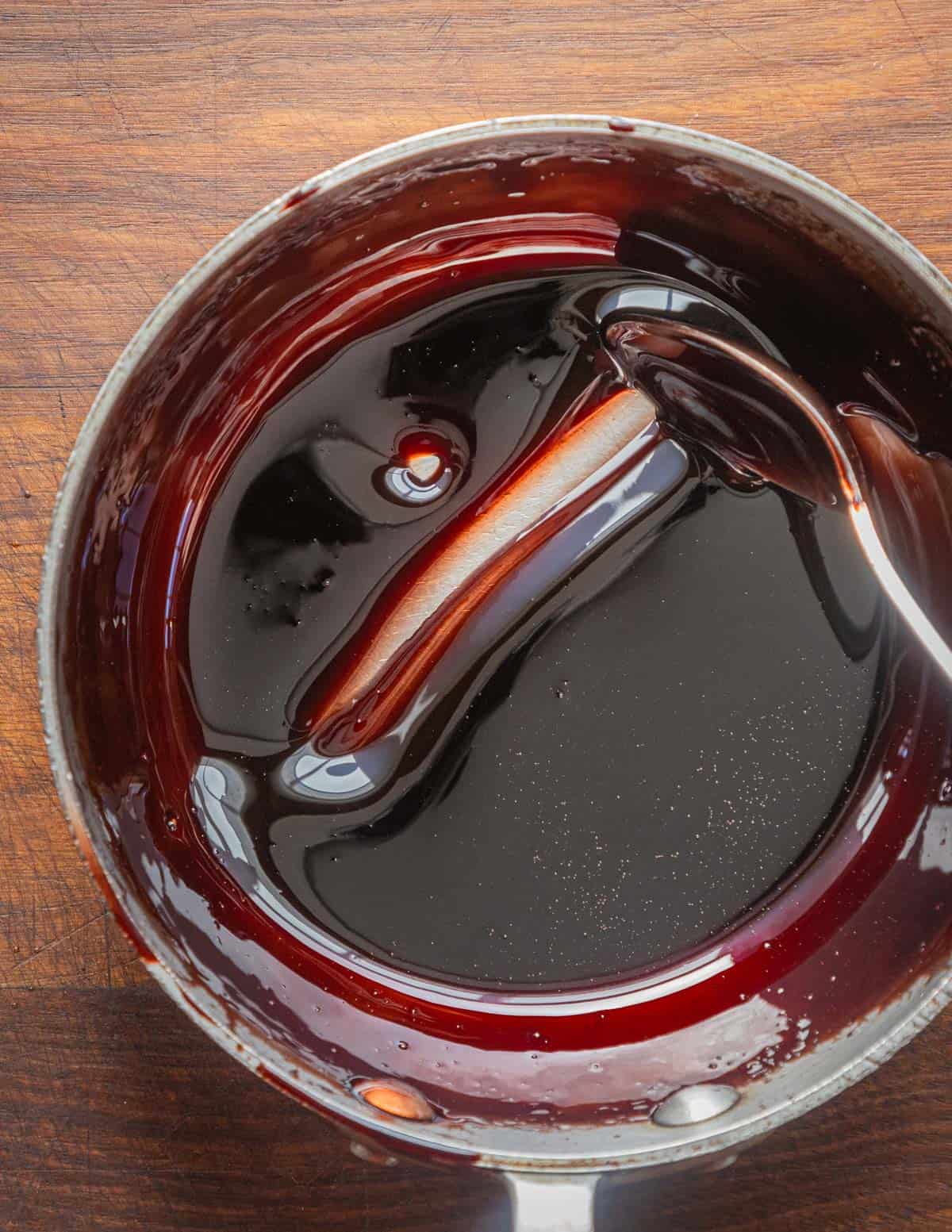
When the syrup is thick enough to coat the back of a spoon and reduced by roughly 70% of its volume it's done. It should be thick, shiny, and delicious. It'll last for years canned in a mason jar or simply put in the fridge.

How to use it
The syrup is traditionally drizzled or spread on toast. It can also be taken by the spoonful for "medicinal properties" but I'm not qualified to speak to that.
One of the best things to do with it is to drizzle it over tahini or mix it as a dip. It can also be mixed with tahini to be used as a tart-sweet sauce.
Related Posts
Homemade Mulberry Syrup or Molasses (Pekmez)
Equipment
- 1 Fine mesh strainer or cheesecloth
- 1 Large 4 quart non-reactive sauce pot
- 1 latex gloves optional, for squeezing juice from the berries
Ingredients
- 5 lbs Ripe black mulberries
- 1 cup Organic sugar or granulated sugar
- 2 Teaspoons fresh lemon juice for canning, optional
- 1 Tiny pinch Kosher salt roughly ¼-1/8 tsp
Instructions
- Put the mulberries in a pot, cover and bring to a simmer over medium heat until hot and steaming, about 10 minutes. Mash the berries around with a potato masher or wooden spoon occasionally.
- Once the berries are hot and mashed they'll have given up a lot of juice.
- Pour the mulberries and their juice into a double thickness of cheesecloth over a strainer and allow to cool. Squeeze as much juice from the fruit as you can. If your fruit was clean you can save it to make jam.
- Combine the juice with the sugar and salt, bring to a gentle simmer and cook for until reduced by 70% to 1.5 cups. This should take roughly 1.5 hours.
- If you want to can the syrup, add the lemon juice now.
- Pour the hot syrup into three four oz mason jars or another container. Srew on the lid and process in a water bath canner for 10 minutes. Remove the jars and cool, then label, date, and store in a pantry.
- The syrup will last for years in the fridge or in the pantry and can also be frozen.

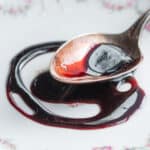
Jane
Can you use dried mulberries for this recipe?
Alan Bergo
No sorry that won’t work as they don’t have juice.
Nicole Briggs
I just foraged mulberries for the first time. As a kid we would eat them off the trees while we were playing. As I came across some trees I realized I have never used them for cooking or baking. I made some mulberry muffins which were delicious. I found in the 2nd batch it was better to freeze the berries first so they would stay together when folded into the batter. I’m going to use your recipe here to try the syrup with what’s left. If all goes well i’ll be raiding my friends farm for more berries as they have more than a dozen trees.
Alan Bergo
Hey Thanks Nicole. Let me know how it works for you. Remember you need a lot of fruit to make even a small batch because it's a reduction. The leftover fruit can be used to make jam, or if they were dirty the birds would love them mixed with some tallow and oats, etc.
delishuspear
Excellent post, Alan. I'm really excited to make some of this this season. By coincidence, just before reading this post I watched a video by Country Life Vlog wherein an Azerbaijani couple made this very ingredient. In the course of the video they made a simple cake comprised of pekmez, baking powder, oil, eggs, and flour. I haven't been able to track down the name of this confection, but I'm wondering if it's something you've come across in your research? Likewise, I am betting that pekmez could be used to delicious effect to make some variation of that grape molasses & walnut candy I mentioned before (churchkhela, cevizli sucuk).
Thanks as always for the detailed post!
Alan Bergo
Thanks Dylan. That cake sounds awesome. I haven’t heard of it. I’ll try to check my big Turkish book for it today.